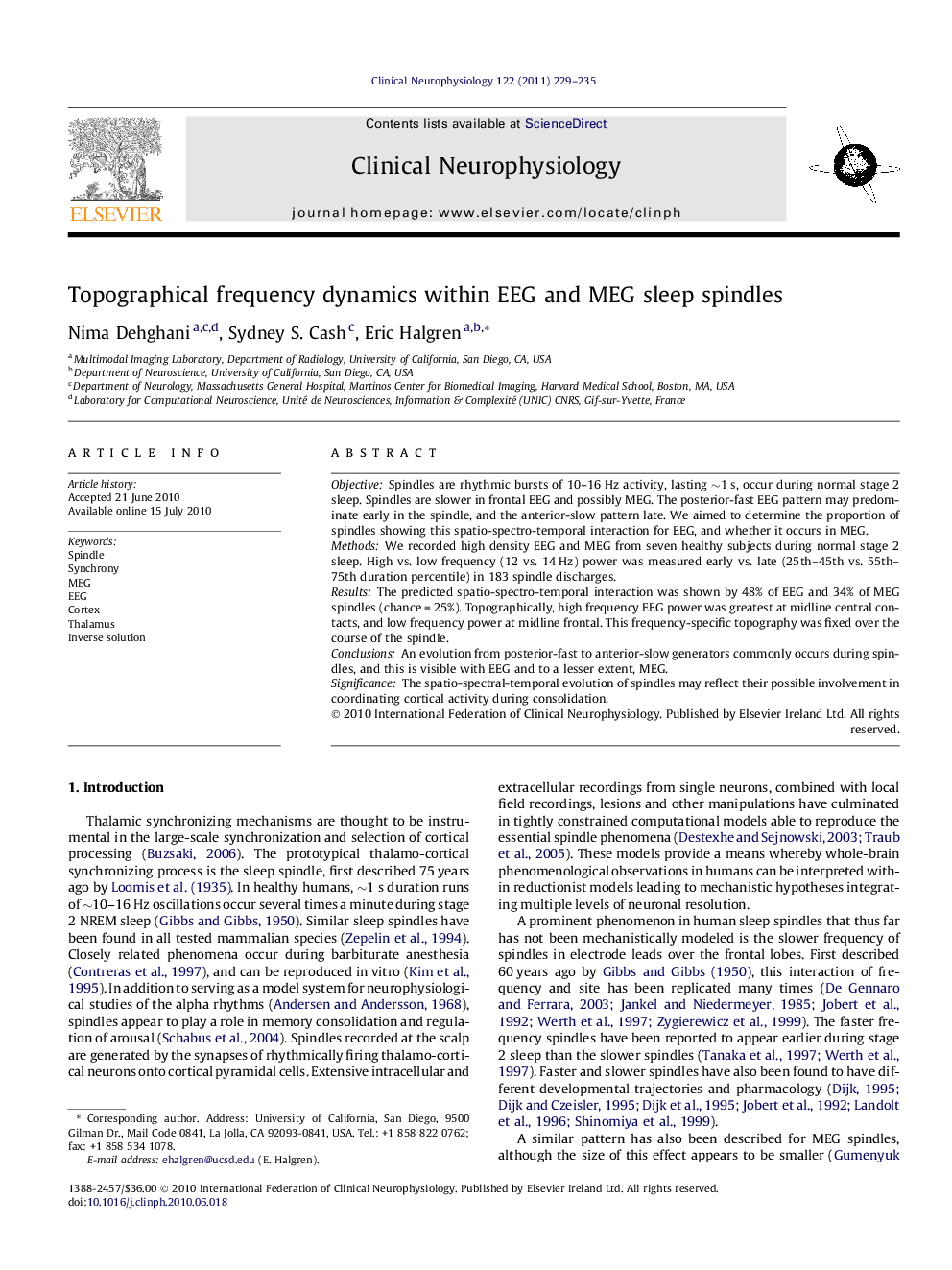| Article ID | Journal | Published Year | Pages | File Type |
|---|---|---|---|---|
| 3044975 | Clinical Neurophysiology | 2011 | 7 Pages |
ObjectiveSpindles are rhythmic bursts of 10–16 Hz activity, lasting ∼1 s, occur during normal stage 2 sleep. Spindles are slower in frontal EEG and possibly MEG. The posterior-fast EEG pattern may predominate early in the spindle, and the anterior-slow pattern late. We aimed to determine the proportion of spindles showing this spatio-spectro-temporal interaction for EEG, and whether it occurs in MEG.MethodsWe recorded high density EEG and MEG from seven healthy subjects during normal stage 2 sleep. High vs. low frequency (12 vs. 14 Hz) power was measured early vs. late (25th–45th vs. 55th–75th duration percentile) in 183 spindle discharges.ResultsThe predicted spatio-spectro-temporal interaction was shown by 48% of EEG and 34% of MEG spindles (chance = 25%). Topographically, high frequency EEG power was greatest at midline central contacts, and low frequency power at midline frontal. This frequency-specific topography was fixed over the course of the spindle.ConclusionsAn evolution from posterior-fast to anterior-slow generators commonly occurs during spindles, and this is visible with EEG and to a lesser extent, MEG.SignificanceThe spatio-spectral-temporal evolution of spindles may reflect their possible involvement in coordinating cortical activity during consolidation.
